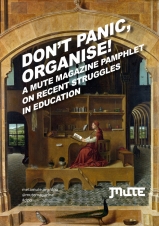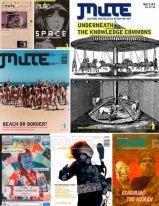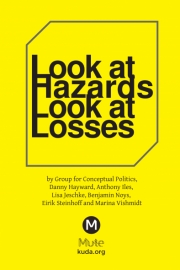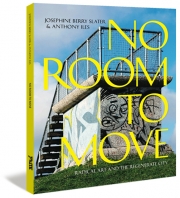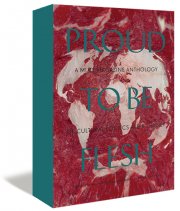Synaesthesia and Reductionism at the Venice Biennale
This year Europe has experienced what has been touted as 'the summer of art'. With the rare cyclical alignment of the Venice Biennale, Art Basel, Documenta 12 and Munster Skulptur Projekte, organisers of the four events have collaborated on a website [www.grandtour2007.com] to help coordinate the itineraries of those jet-set art lovers that would follow in the edifying footsteps of their 18th Century precursors. In 2007 Art has never been so big and apparently neither have the wallets of those stalking it.
While international relations are increasingly frayed by the war on terror, new green order and struggles for energy sovereignty, the Venice Biennale provides a cultural space in which all these geopolitics are played out. Here, global hegemons put on a show and vie for attention, while lesser nations just grin and bear it as each takes its place in a World's Fair style exhibition of creativity and show-off-manship. As in other contemporary demonstrations of imperial power, at Venice the outside was included inside. Art group Gelatin, by now a staple of international art events, mounted an assault on the exclusivity of the Biennale opening by arranging makeshift rafts for outsiders to sail across the waterfront and past the security cordon.
Documenta 13 has been panned by critics for being either too radical or not radical enough and is vehemently anti-market, at least in its rhetoric. By contrast, Venice tends to tread a middle line. The Biennale was openly commericial from 1942 to 1968, and this year the old tradition seemed set to resume with the inauguration of Cornice, an art fair from 7-10 June which coincided with the opening of the Biennale proper. Despite the worldwide proliferation of art fairs, Venice still plays a special role. As Jérôme Sans, director of programming at The Baltic, Gateshead, put it when interviewed by the Art Newspaper: 'All the dealers and collectors are here, and all the deals are done here.' This year’s artistic director Robert Storr's avowedly sensualist rather than political line seems to create the perfect bridge between the market and its increasingly important lubricant – criticality. The Biennale's strapline 'Think with the Senses - Feel with the Mind. Art in the Present Tense' seemed to shrug off the artworld trend towards social engagement. Yet this was little more than a smokescreen, just another framework for business and art as usual. From Gelatine's antics, to Felix Gonzalez Torres’s posthumous installation, to a series of critical seminars on topics such as 'gossip in the art world’ the Venice Biennale seemed more confident than ever that its critique would be incorporated. Rather than acquiesce with a critical review, Mute invited artist Nick Brooks to present his own response in the form of a visual and textual sketchpad.
Anthony Iles

Image: Nick Brooks, Sketch I (David Altmejd installation & Adel Abdessemed's Exil. Photograph: Gelatin's raft-piracy)
From the inauguration of consumption that sees the stabbing of hors d'oeuvres in hen fights along the Arsenale waterfront, the provision is noted as being too little, platform too confined for the assembled appetites to be satisfied. Already the collateral faction are attacking from the rear by inner tube and planks across the water. That night the pirates take to the streets partially naked, invading private balconies and being taken hostage in a fit of premeditated pique.
Another attempt to surreptitiously archive the contemporary gaze reels out in the elongated rope factories of the Arsenale. Conveying the audience from America to Africa via Beirut and Iraq; the laboured task of selection and juxtaposition immediately opening up a space of exhaustion in which works must fight their way back to the surface from their literal and metaphorical submersion. 'Art in the Present Tense' as a submerging; an on-the-hoof historicisation. The 'present tense' changed effortlessly into simple past.
 Image: Nick Brooks, Sketch II (Tatiana Trouvé Installation, Neil Hamon & Rosario López photographs)
Image: Nick Brooks, Sketch II (Tatiana Trouvé Installation, Neil Hamon & Rosario López photographs)
'Look at them working, the builders of ruins', quotes Robert Storr in the introduction to Gabriele Basilico's photographs of war torn Beirut, using Paul Eluard to lay a glaze on these and other Magnum style photographic works at the beginning of the show. Eluard's elegance is put to work carving up the signifiers of these images and laying out certain aesthetics of immanence and nostalgia. This reified image of reverse construction seems to speak both of the fascination with the self-made architecture of the dispossessed and of the firming up of new sediments of meaning by the reconsigning of the raw material of artistic output. Read in this way, the military road blocks that 'appear like minimalist sculptures' then somehow segue under pressure into the gay flat cut-outs of Luca Buvoli's futurist follies. A re-imagining in utopian Technicolor and wire-hung false perspectives of a piece of temporal historical bravado that mirrors the imaging of the 'contemporary' served up for the Venice audience.
 Image: Sketch III (Neil Hamon photograph, Morrinho Project installation & Marine Hugonnier's Art of Modern Architecture.)
Image: Sketch III (Neil Hamon photograph, Morrinho Project installation & Marine Hugonnier's Art of Modern Architecture.)
The narrative of the Biennale is a preoccupation with surfaces. It reads like a catalogue of decors in which we find embedded certain cultural signifiers. The compendium comes of course sealed with the authority of an editor whose role is to usher us through, provoke us and make us pause and is necessarily framed, as voyeurism demands, with the culture and predilections of the voyeur in mind. It is this vision of the distinguished or exotic through the normative gaze of the culturally oriented observer that characterises the most basic tenet of the Arsenale.

Image: Nick Brooks, Sketch IV. Ignasi Aballí's Lists & Bienalle image digest.
We are given at the outset a cosmology of political climates and civil conflicts re-produced, from Buvoli through Neil Hamon's photographic portraits of military re-enactments to Zoran Naskovski's recordings from TV during the bombardment of Belgrade. A weather balloon hovering aloft above the crowds sporting a question mark in green camouflage serves as some sort of motif from which much of the ground cover can hang. What is this veneer of associations?
For swamps read: endurance/ conflict
For derelict buildings read: civil rights/civil war
For crowds read: globalisation/economy
For newsprint read: zeitgeist
'Don't complain' Huseyin Apltekin instructs in neon as his avatars of Globalisations' Real Lifers rehearse their downtime conduct in video feeds multiplied into the characterless lounges of Norwegian hut dwellers. He chooses rustic-tech frisson with passive reportage gaze. Our furniture is white. It is the purifying edification of aestheticised journalism.
 Image: Nick Brooks, Sketch V (Jason Rhoades' Tijuanatanchandelier & Ignasi Aballí's Lists)
Image: Nick Brooks, Sketch V (Jason Rhoades' Tijuanatanchandelier & Ignasi Aballí's Lists)
Some relief in obstinate fakery: Jason Rhoades faux continent with islands of mattresses where we rest after passing Afghanistan and Belgrade and are enriched by the cheapened last ditch enterprise of identification. It is South of North America: Mexico with chillies and neon. This is the recuperative feature of the landscape - where the planes and projections of uneven surfaces rutted under bombardment become too affronting it softens and smoothes into balsa and eiderdown and we are wooed by candy lighting.

Image: Nick Brooks, Sketch VI (Paolo Canevari's Bouncing Skull)
The terrain is as such continuous, and we saunter towards an equation of the happy dystopian playthings of Rhoades, the studied utopias of the Kabakovs, the modernist syntax of Marine Hugonnier's decorated Arabic newspapers and the oddly banal manifestation of an East German truck used as a troop transport by the Sandinistas driven and left here by Ernesto Salmeron. These meld into asynchronous noise that seems to instate the distracting possibility of an equality of means and of forces under which formal divergence may be observed.

Image: Nick Brooks, Sketch VII (The Israeli Pavillion)
What the structure seeks to provide is coverage. The motif of journalism is extended to both content and presentation and we arrive at a pattern of activity, monitored and mapped as one might schematise historic military campaigns.
A gaze thus overhauled to track the topography of some rationally bankrupted idea of transnational characteristics can find no resting place among the hazards and convolutions of interdisciplinarity. In the main building we end in the African component, where a large ledger sits beneath the slogan soliciting the public's response to the question: 'L'art Africain pourquoi faire?' The ledger is notably empty save for doodles.
Mute Books Orders
For Mute Books distribution contact Anagram Books
contact@anagrambooks.com
For online purchases visit anagrambooks.com


